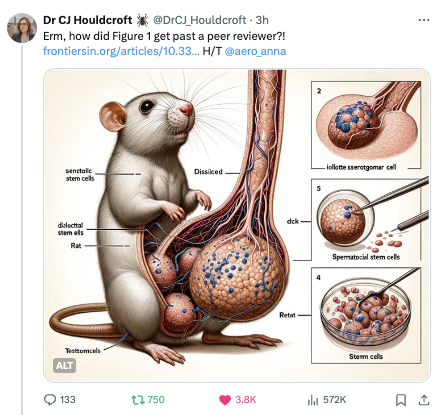A review article with some obviously fake and non-scientific illustrations created by Artificial Intelligence (AI) was the talk on X (Twitter) today.
The figures in the paper were generated by the AI tool Midjourney, which generated some pretty, but nonsensical, illustrations with unreadable text.
It appears that neither the editor nor the two peer reviewers looked at the figures at all. The paper was peer-reviewed within a couple of weeks and published two days ago.
Dear readers, today I present you: the rat with the enormous family jewels and the diƨlocttal stem ells.



